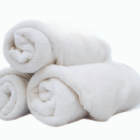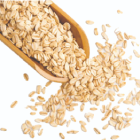With a total area of about 20 square feet, the skin is the largest organ in the body. Its primary function is the sense of touch, besides protecting and covering. Across the world, people differ according to the colour, texture and quality of their skin. Biological factors determine these variations, as also do geographical location, exposure to the sun and living conditions.
It is a well-known fact that summer comes down hard on the skin, and a whole beauty industry can survive manufacturing products for sun tan, sun burn, prickly heat, sweat and so on. But winter is no less. It can cause long term damage to skin in the absence of proper prevention and care.
Winter and skin don’t hit it off well. The dip in temperature not only dries the skin to flakiness, creating itching and blotches but also dries the lips, nose and heels. It is a noteworthy point that though the sun is not shining in all its strength during the winter, its effect remains through the ultraviolet rays it emits. Cold air that feels good on the skin actually dehydrates it, making the skin irritable and dry.
There are numerous ways to get a grip of the situation, but these are by far the best. The results are verified and lasting.
Water
We normally do not feel thirsty for water during the cold weather But keeping hydrated by drinking lots of water is the best way to retain great looking skin during winter (and otherwise too). The loss of moisture from the surface of the skin gets replenished by the regular intake of water, while detoxifying the internal system. That way, it’s a double-dynamite.
Who doesn’t enjoy a hot bath on a winter morning? The trouble with a hot bath is that it dries the skin further, increasing the damage caused by the cold. On the alternate, a warm bath with gentle moisturizing soap is a real rejuvenator.
Cool water can be used to wash the lips to provide relief from chaps and cracks, followed by a dab of Lanolin, VitaminE-rich chap-stick or petroleum jelly.
A humidifier keeps the air warm and moist enough to hydrate the skin. A dash of essential oil in the humidifier calms the senses as well.

Clothes
Come winter and we think wool. Wool can irritate an already inflamed skin and cause itching. Cotton clothes do well for the skin and the body. After a shower, pat dry to help the skin retain and absorb moisture. A vigorous towel rub strips the skin of its natural oils. Socks protect the feet, especially the heels, from drying out and developing cracks. Apply lanolin, petroleum jelly or crack-cream before wearing socks.

Immunity
Nothing beats a healthy body, fortified by nutritious food, lots of water, exercise and fitness, meditation and good sleep. Immunity helps the body bounce back and heal fast. Immunity boosters and supplements are available over the counter for those with a rapidly depleting immunity system.

Exfoliation
Using a gentle exfoliator to remove dead cells makes the skin permeable and helps moisturizer do its work efficiently. Vigorous exfoliation exposes the skin to the cold and further damage. Oatmeal is a refreshing, natural and mild exfoliator.
Anti-Fungal / Anti-Bacterial Powder
Dry skin can spur infection in the inner-thigh region for people on the heavier side, causing rashes and redness. It is necessary to wash the area regularly with warm water, pat dry and dust on anti-fungal / anti-bacterial powder. Wearing pants separates the thighs and helps the area heal faster.
While there is nothing much that can be done about the weather, and since winter is mostly synonymous with holidays and happiness, the only choice left would be to protect the skin from damage. There are promising beauty treatments for all kind of skin conditions, but a personal skin care schedule can work wonders.

